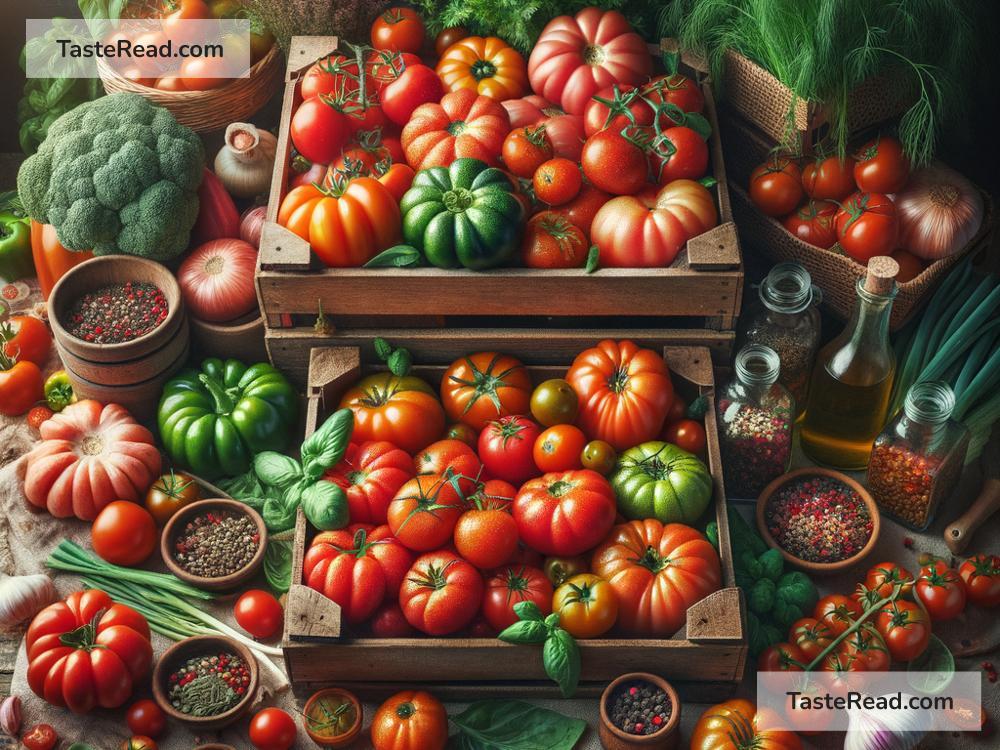How Tomatoes Became a Global Culinary Favorite
Tomatoes are everywhere in cooking today—whether it’s a pizza, pasta, salsa, curry, or salad, this bright, juicy fruit plays an important role in kitchens around the world. But have you ever wondered how tomatoes, originally from South America, became such a global culinary superstar? Let’s explore the fascinating journey of tomatoes and how they rose to fame in cuisines everywhere.
Humble Beginnings in South America
Tomatoes first grew in the wild in the Andes Mountains, where present-day countries like Peru, Ecuador, and Bolivia are located. Native people who lived in these regions cultivated the tomato plants for centuries. Early tomatoes were smaller and less sweet than the ones we eat today, but they were still a useful food source.
The tomato’s journey began in earnest when explorers from Europe arrived in the Americas during the 15th and 16th centuries. Spanish conquistadors, who were changing the way the world exchanged crops, animals, and goods, discovered tomatoes in Mexico—the plant was already being farmed there by the Aztec civilization. The Aztecs called tomatoes “xītomatl,” which is where the modern name “tomato” comes from. From there, the Spanish explorers brought tomato seeds back to Europe.
Europe: From Suspicion to Acceptance
When tomatoes first arrived in Europe in the early 16th century, people were not sure about them. Tomatoes looked a lot like certain poisonous plants, and since tomatoes are part of the nightshade family, many Europeans thought they might be dangerous to eat. For years, tomatoes were mainly grown as ornamental plants—meaning people admired their colorful fruits but didn’t think of them as food.
Gradually, tomatoes began appearing on plates in Mediterranean countries like Spain and Italy. In Italy, where the sunny climate is ideal for growing tomatoes, people slowly adopted the fruit into their kitchens. By the late 17th century, tomatoes were featured in Italian recipes, such as sauces to pair with pasta. Tomato-based dishes became increasingly popular, laying the groundwork for iconic Italian foods like pizza and spaghetti that we know today.
Crossing Continents and Cultures
As European explorers and traders sailed around the globe, they carried tomatoes with them. Tomatoes spread to Asia, Africa, and the Middle East, adapting to each region’s cuisine along the way.
In Asia, tomatoes found a home in countries like India, China, and Southeast Asia. Indian cooking added tomatoes to curries, chutneys, and soups, blending them beautifully with spices. In China, tomatoes became part of stir-fry dishes and egg-based recipes like the beloved “tomato and egg stir-fry.” Southeast Asia used tomatoes in spicy salads and broths, showcasing their tangy flavor.
Meanwhile, in the Middle East and North Africa, tomatoes became a staple in stews and dips like shakshuka and harissa. In Africa, tomatoes became essential for making rich, flavorful sauces for rice and meat dishes.
Eventually, tomatoes were carried to North America by colonial settlers. Tomatoes thrived in the warm climate of places like the Southern United States. Over time, they became an integral part of American cooking, appearing in dishes like ketchup, barbecue sauces, and Southern-style tomato pies.
The Tomato’s Versatility
One of the main reasons tomatoes became so popular is their incredible versatility. Tomatoes can be eaten raw, cooked, roasted, or dried. They can add a fresh burst of flavor to salads, a tangy kick to salsas, or a rich depth to soups and stews. They’re equally at home in light summer dishes or hearty winter meals. This adaptability makes tomatoes valuable for cooks in any region or season.
Tomatoes are also highly nutritious. They’re packed with vitamin C, potassium, and antioxidants like lycopene. The health benefits of tomatoes made them even more desirable as people learned more about nutrition over time.
Industrial Revolution Boosts Tomato Popularity
The Industrial Revolution in the 19th century played a big role in spreading tomatoes even further. Canned food became widely available during this era, and tomatoes were one of the most commonly preserved ingredients. Tomato cans made it easy to bring this fruit into homes everywhere, especially during long winter months when fresh produce wasn’t always available.
Canning also helped popularize products like tomato soup and tomato paste, which remain essentials in kitchens today. As transportation improved, fresh tomatoes could be shipped across long distances, allowing everyone to enjoy them, even in places where they might not naturally grow.
The Tomato in Modern Times
Today, tomatoes are loved in nearly every corner of the world. They are grown in hundreds of different varieties, from cherry tomatoes and plum tomatoes to giant heirloom tomatoes. Each type serves a different purpose in cooking, and chefs and home cooks use them creatively in diverse recipes.
Thanks to their rich history, health benefits, and unbeatable taste, tomatoes have become a symbol of global culinary connection. No matter where you’re from, you’ve probably enjoyed a dish that depends on the humble but amazing tomato.
So, the next time you bite into a slice of pizza or spoon some tomato soup into your bowl, take a moment to appreciate how far this fruit has traveled—from the mountains of South America to becoming a beloved ingredient in kitchens worldwide. Tomatoes prove that food truly has the power to bring people and cultures together!


